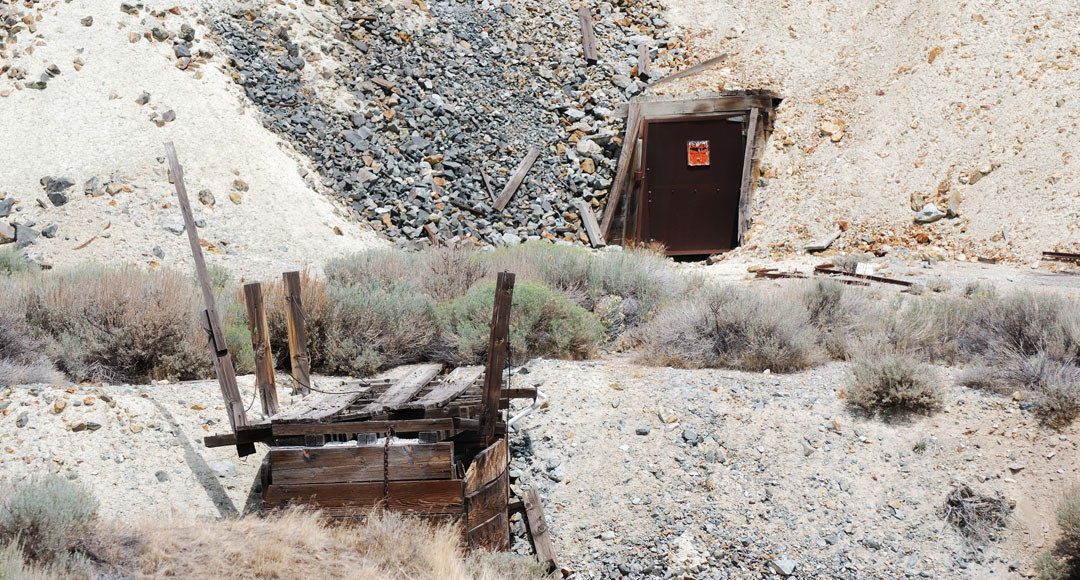ABOVE-GROUND MINING
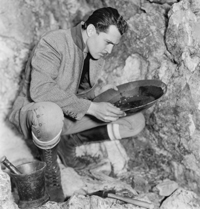 Placer Mining
Placer Mining
The earliest mining methods involved placer mining, the removal of gold or other precious minerals from river and stream beds by repeatedly washing the sand containing the minerals with moving water.
In the early gold rush days, miners used shallow pans into which they put water and a small amount of gold-bearing sand, then swirled the pan. The gold, being heavier, would sink to the bottom of the pan, separating it out from the sand. The method was slow and produced very small amounts of gold, but required little equipment or expertise.
Later refinements of this technique involved use of rocker boxes or “cradles” which could handle higher volumes of material. These in turn gave way to sluices, which handled even greater amounts of ore and were, moreover, somewhat automatic in function.
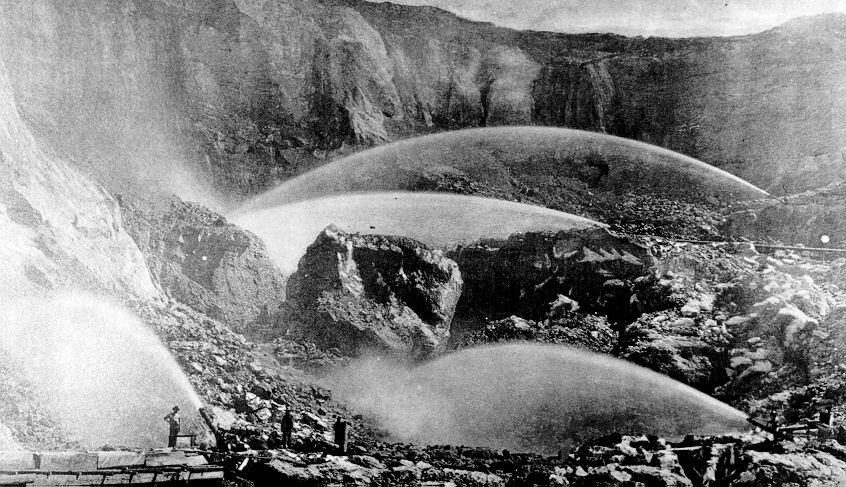 Hydraulic Mining
Hydraulic Mining
In 1853, Edward Mattison devised a piece of equipment that used a length of rawhide (later canvas) hose and a carved wooden nozzle to concentrate water pressure and blast into hillsides containing gold ore, washing it into stream beds where the ore could then be processed. This method became known as ‘hydraulic mining’, and refinements to the technique followed rapidly.
By the 1860s, the process was industrialized and giant ‘water cannons’ were being used to bring down whole hillsides. The cannons were commercially forged by various manufacturers, the most well-known of which was the Monitor, built by the Craig Company; water cannons are often generically referred to as ‘monitors’. The cannons were fed by miles of ditches and flumes; the force of the water stream at the cannon mouth could launch fifty-pound boulders thousands of feet and was responsible for the deaths of many miners.
Hydraulic mining was used in California from 1853 to 1884, and caused enormous destruction to the environment during that time. Millions of tons of earth were washed downstream and deposited in riverbeds and bays as the waters slowed. The resulting floods wrecked havoc on farmers, and the shift in channels jeopardized shipping. Worse, the mercury with which the gold was extracted leached into the water supply and was carried downstream onto farmland and into the San Francisco Bay.
On January 7, 1884, the landmark case of Edwards Woodruff v. North Bloomfield Mining and Gravel Company was decided in U.S. District Court. It not only stopped hydraulic mining in California, but was the first major environmental victory.
BELOW-GROUND MINING
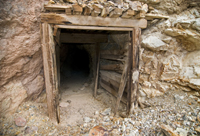 Hard Rock Mining
Hard Rock Mining
As surface mining played out, mining moved underground in tunnels which followed the vein of gold or other desirable mineral deposits. Early gold (and later silver) mines used a standard post-and-beam construction which was adequate for short runs and stable ground. When silver was discovered in great abundance in the Comstock Lode, however, the game changed.
The ground on the Lode was crumbly and hazardous; the slippery clay oozed around standard construction and destroyed the tunnels before they could become productive. A new construction method was needed.
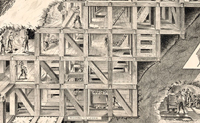 Square-Set Timbering
Square-Set Timbering
In 1860 a mining engineer named Philipp Deidesheimer invented a method of timbering that revolutionized hard rock mining. It involved a series of interlocking cubes made of 18 by 18 inch timbers that could be extended in any direction, or filled with rock and rubble to create a supporting column for the tunnel.
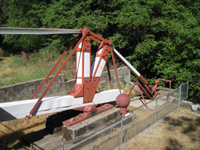 Cornish Pumps
Cornish Pumps
A second seemingly insurmountable problem on the Comstock Lode was the presence of underground rivers of superheated water. The early days of the Lode were plagued with frequent shutdowns and seemingly endless delays caused by flooding and heat.
Cornish pumps solved the problem by pumping out water from even the lowest levels of the mines. They work by lifting and releasing a heavy weight on the end of a beam. Basic pumps using the principle had been invented in the early 1800s in Cornwall, a pre-eminent hard rock mining area. The technology was refined and developed on the Comstock Lode, making mining at extreme depth a possibility.
EXPLOSIVES
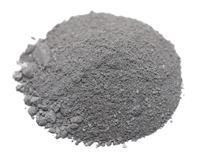 Black Powder
Black Powder
Black powder is composed of sulfur, charcoal, and saltpeter (potassium nitrate). It was invented around the 9th century B.C. in China, and was widely used in firearms and fireworks. Unlike modern explosives, it has a relatively slow burn rate, making it more useful for firearms than as a construction aid. Until the mid-19th century, however, it was the only explosive available and as such was widely used for mine excavations.
 Nitroglycerin or ‘Blasting Oil’
Nitroglycerin or ‘Blasting Oil’
Nitroglycerin was invented around 1846 by the Italian chemist Ascanio Sobrero, who warned against using it as an explosive. The compound is notoriously unstable and production of it resulted in numerous major explosions in manufacturing facilities. Nonetheless, it was a major advance over black powder for construction purposes, and commercial production began in Germany in the mid-1860s.
It was imported to the United States for use in building the transcontinental railroad, but after the major explosion in 1866 of a shipment in the San Francisco office of Wells Fargo, transportation of the substance was outlawed in California. There was, however, no ban on the manufacture of nitroglycerin, so on-site production facilities were established at the rail head of the Southern Pacific, where tunnels were being driven through the Sierras.
It was also imported to the Comstock Lode, where it was used in blasting mine shafts and tunnels. By 1868 it was in common use there.
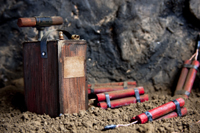 Dynamite or ‘Giant Powder’
Dynamite or ‘Giant Powder’
In 1867 Alfred Nobel mixed diatomaceous earth (a form of silica) and nitroglycerin, making a pasty substance he patented as ‘dynamite’. This substance could be wrapped in paper and safely shipped; the cylindrical shape also made it ideal for loading into the cylindrical holes created by miners’ drills.
The earliest commercial manufacturing of dynamite in the U.S. occurred in what is now Glen Canyon Park, San Francisco. On March 19, 1868, the Giant Powder Company started production at its first plant there, under an exclusive U.S. license from Alfred Nobel to produce his new explosive.
(Posted April 2014)
